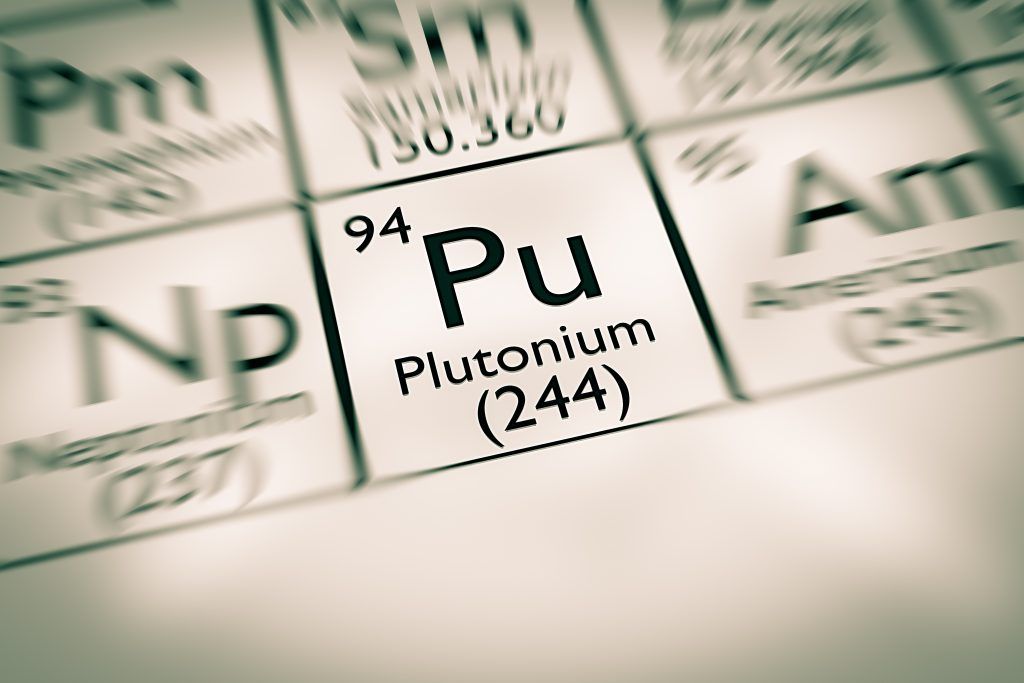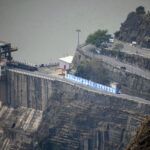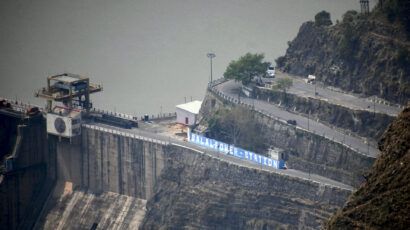Northeast Asia’s inflection point for plutonium stockpiling
By Joseph Schofield | March 2, 2018

Northeast Asia experts have, for several years, been confronting an enormous amount of political turmoil in a region where the prospects for further nuclearization—and even large-scale war—appear to have increased dramatically. As North Korea continues to demonstrate its nuclear weapons capabilities through increasingly provocative actions, nongovernmental expert groups such as the Pugwash Conference series—which last convened in Astana, Kazakhstan, in August 2017—have understandably narrowed their focus to interpreting North Korea’s conduct and evaluating how regional state actors should respond. The growing danger posed by North Korea’s nuclear program, however, only further underscores the importance of strengthening regional relations more broadly as a counterforce against destabilizing events.
The list of thorny and long-standing issues among China, Japan, and South Korea includes addressing historic grievances, counteracting nationalist political forces, US involvement in regional missile defense systems, and regional use of plutonium and other civil nuclear materials. Groups like Pugwash might, in fact, make the greatest positive impact by utilizing their backchannel diplomatic capabilities in these subject areas, which remain no less complicated and no less important to regional stability in 2018.
Specifically, a look at the current nuclear fuel reprocessing prospects in Japan, South Korea, and China reveals overlapping windows of opportunity regarding domestic policy decisions. This confluence of political circumstances could be exploited through continued backchannel discussions to facilitate a coordinated set of national decisions that would strengthen regional nonproliferation efforts and mark concrete progress toward regional stability.
Plutonium separation and national reprocessing programs. Plutonium is one of several byproducts generated when low-enriched uranium fuel is burned in a civil nuclear reactor. The plutonium contained in spent fuel can subsequently be separated through well-established chemical reprocessing methods. Separated plutonium comprises a mix of various isotopes, including plutonium 239, the one most suitable for use in nuclear weapons. The relative amounts of these isotopes depend on how the initial uranium fuel is burned, with “weapons-grade” isotopic ratios being attained only through deliberately shortened reactor operation times that are entirely inconsistent with commercial power production.
Fabricating a nuclear weapon using plutonium from typical spent commercial fuel is neither convenient nor efficient but is nonetheless possible. Such an effort would require overcoming significant mechanical and radiological obstacles, and would result only in a weapon of relatively low yield by nuclear weapons standards; however, the fact that reactor-grade plutonium is far more globally abundant, and often less secure, than weapons-grade plutonium makes it a potentially more attractive target for theft or diversion. Accordingly, the stockpiling of separated plutonium of any grade poses a significant proliferation risk. Here’s where the prospects for plutonium separation currently stand in Japan, South Korea and China:
Japan has a domestically housed plutonium stockpile of about 10 tons, the vast majority of which is reactor-grade plutonium separated for future use in mixed oxide (MOX) commercial fuel. Before 2016, however, Japan’s research and development facilities stored a total of about 450 kilograms of plutonium with isotopic ratios at or near weapons grade. The plutonium at these facilities is in metal form and separated into small squares to minimize the radiological challenges for handling, which when combined with the large quantity and historically lax security creates a proliferation concern that can hardly be understated.
The majority of Japan’s weapons-grade plutonium—331 kilograms—has since been sent to the United States for permanent disposal. The transfer was completed in 2016 as part of an agreement between the Obama and Abe administrations first announced at the 2014 Nuclear Security Summit. The transfer marked the success of what former US Secretary of Energy Moniz described as “the largest single nuclear material removal in the history of [the] summit process.” Japan’s commitment to the transfer suggests that future arrangements to remove the remaining higher-grade plutonium are very much possible.
Addressing Japan’s massive stockpile of reactor-grade plutonium, on the other hand, remains a more sensitive domestic issue. Japan’s nuclear agreement with the United States, signed in 1988, allows Japan to reprocess and recycle its spent nuclear fuel. The agreement is set to expire in mid-2018 but will remain in force if no other action is taken. While the economics of pursuing a closed nuclear fuel cycle are questionable at best, Japan’s current stockpile of separated plutonium (much of which is actually stored in Europe) does have real economic value. Even if Japan were to abandon reprocessing, the vast sums of money already sunk into its efforts will reasonably lead Japanese policymakers to look for creative ways of mitigating losses, despite the fact that separated plutonium is typically assigned a zero or negative market value.
South Korea does not currently have any separated plutonium stockpiles, but as the fifth largest generator of nuclear power, it possesses large amounts of spent fuel that could be reprocessed if such a policy were pursued. Since 1997, South Korean scientists have been working with American researchers at Argonne and Idaho National Laboratories to develop “pyroprocessing” technology. One of the driving concepts behind the research is that pyroprocessing would not completely isolate the plutonium but would instead result in a mixture of plutonium and other fissionable actinides such as neptunium, americium, and curium. In theory, this would reduce both the volume of waste from the overall fuel cycle, and the technical requirements for safe storage. In terms of nonproliferation, the nuclear properties of the additional actinides would render pyroprocessed spent fuel “proliferation-resistant.” However, the director of Argonne National Laboratory was quoted by South Korean media in 2014 as saying that pyroprocessing is “not proliferation proof,” and is only “marginally more proliferation-resistant than PUREX processing,” the separation technique used by Japan. Others have raised concerns that pyroprocessing facilities could be easily adjusted to produce higher-grade plutonium.
President Moon Jae-in has pledged to reconsider South Korea’s involvement in pyroprocessing research. Given the Moon administration’s recently announced policy platform to phase out civil nuclear power altogether, a decision not to pursue a costly national pyroprocessing effort appears reasonably likely. Such a decision would be welcomed by regional neighbor states and by the United States, which, despite leaving the door open to a possible future decision in favor of South Korean pyroprocessing, remains generally opposed to new national reprocessing programs.
China has a weapons-grade plutonium stockpile estimated at around 1.8 tons. This plutonium was produced as part of China’s nuclear weapons enterprise at two now-closed sites in Yumen and Guangyuan. As a nuclear weapons state, China is highly unlikely to be willing to discuss its weapons-grade plutonium, and any agreement on future reprocessing plants will require setting aside issues related to China’s current weapons stockpile.
China does not currently reprocess its spent commercial nuclear fuel. However, in 2015, the Chinese National Nuclear Corporation (CNNC) signed a non-binding memorandum of understanding with the French multinational nuclear group Areva to move forward on a large-scale reprocessing facility. Six sites were chosen for consideration, although talk of a decision to construct a facility in Lianyungan led to large-scale protests and a subsequent decision to suspend further progress at the site. Plans for the large-scale facility have since languished. In January 2018, a state visit by French President Emmanuel Macron was meant to push the project along but resulted only in another non-binding agreement that does little more than maintain the status quo. As of this publication, no site has been chosen, and no contract has been signed. Given China’s sensitivity to strong public opinion, and its precedent for letting suspensions of unpopular projects “quietly [turn] into permanent cancellations,” the CNNC is likely to take its time determining whether and how to proceed.
Coordinating national policy decisions on reprocessing. These political circumstances, while unique to each nation, together make it possible for Northeast Asia to move away from producing separated plutonium. Moreover, coordinating these economic policy decisions would compound the potential benefits to each country by adding a strategic defense dimension. At a minimum, each country would avoid the enormous—and arguably unjustifiable—costs of pursuing a domestic closed fuel cycle, while at the same time receiving assurances that neighbors are not preparing for a shadow race to stockpile plutonium.
For Japan, announcing the shuttering of reprocessing efforts would avoid potentially contentious renegotiations of its nuclear cooperation agreement with the United States, and would demonstrate continued commitment to work toward reducing quantities of sensitive nuclear material. For South Korea, the move would fold neatly into the new administration’s broader political platforms of both regional engagement and the phasing-out of nuclear energy dependence. For China, securing regional strategic balance through coordinated decisions to shelve reprocessing would provide the country’s leadership with broader justifications for a move that would also avoid further public unrest within its borders.
A coordinated set of decisions would also contribute significantly to broader efforts to strengthen good-faith cooperation and stabilize the relationship between North Korea’s neighbors, thereby lessening the possibility that regional responses to belligerent nuclear weapons actions will become increasingly fragmented and unhelpful. Coordinated decisions limited to spent fuel plutonium separation and stockpiling would also be a critically important first step in developing the parameters of a potential Northeast Asia Nuclear Weapons-Free Zone, which could provide the legal framework for the eventual denuclearization of the Korean peninsula.
Opportunities for further Pugwash action. Joseph V. Montville, who coined the phrase “Track II diplomacy” to describe informal and unofficial contacts and activities between private citizens or groups of individuals, wrote that its underlying assumption is “that actual or potential conflict can be resolved or eased by appealing to common human capabilities to respond to good will and reasonableness.” Here, “good will” among Japan, South Korea, and China can be found in a common desire to reduce the amount of weapons-usable nuclear material in the region, align nonproliferation controls, and ultimately develop a more unified posture toward North Korea’s nuclear weapons program. The “reasonableness” component in Montville’s formula, however, may be more difficult to find, because it includes an acknowledgment of the legitimate economic considerations lurking behind spent fuel reprocessing decisions.
None of the three countries are likely to agree to forgo reprocessing unless an alternative solution—tailored specifically to domestic industrial, geographic, and geologic circumstances—comes into view. This means that discussions must include the perspective of regional scientific experts, as well as current and former officials with a deep understanding of the respective domestic civil nuclear industry in each country. Under the auspices of a Track II special meeting, these civil nuclear experts would be free to openly evaluate a range of proposals and perhaps even formulate new disposal options with regional or bilateral cooperative components.
Regarding Japan’s reactor-grade plutonium stockpile, the country’s legitimate economic interests should again be acknowledged; however, the Abe administration, for its part, should take steps to firmly address the security and proliferation concerns raised by maintaining such a large plutonium stockpile. The Japanese government most likely understands the serious security threat that would result from any diversion of its separated plutonium, but direct acknowledgement of the materials’ suitability for weapons could be perceived as conceding the stockpile’s effect on defense-strategic balance in the region. Therefore, negotiating an agreement in an open environment with regional neighbors would discourage counter-deterrence actions as Japan’s plutonium stockpile is gradually reduced. Such a reduction is likely to be achieved through some combination of scheduled irradiation in MOX-ready commercial reactors and shipments to Europe for longer-term storage.
Formulating a viable set of options for coordinated reprocessing decisions will ultimately require regional experts in defense, energy policy, nuclear engineering, and diplomacy—making a group like Pugwash, which is rooted in nuclear science and proliferation awareness, an ideal organization to facilitate a Track II special meeting. While regional attention is currently and appropriately focused on weapons testing and other provocative actions by North Korea, potential recommendations developed by a special reprocessing working group would most surely pique the interest of relevant government officials seeking policies that positively contribute to regional security and nonproliferation.
While the shadow of North Korea’s nuclear weapons program has grown longer over the past few years, non-state actors like Pugwash can continue to find ways to promote peace in Northeast Asia. Facilitating a meeting to coordinate looming reprocessing policy decisions in Japan, South Korea, and China could represent one such avenue for effecting positive change in the region. The overlapping time frames in which the decisions will play out, the existing domestic pressures to give up plutonium separation, and the multidisciplinary expertise required to inform such decisions make the issue ripe for action.
Editor’s note: This essay is based on a presentation at the 10th International Student/Young Pugwash (ISYP) conference in Astana, Kazakhstan, in August 2017. ISYP is a network of students and young professionals concerned with the interface of science, technology, society, and ethics; although independent in scope and policies, it has a mutually reinforcing relationship with the Pugwash Conferences on Science and World Affairs.
Together, we make the world safer.
The Bulletin elevates expert voices above the noise. But as an independent nonprofit organization, our operations depend on the support of readers like you. Help us continue to deliver quality journalism that holds leaders accountable. Your support of our work at any level is important. In return, we promise our coverage will be understandable, influential, vigilant, solution-oriented, and fair-minded. Together we can make a difference.
Topics: Nuclear Energy, Nuclear Weapons, Voices of Tomorrow















